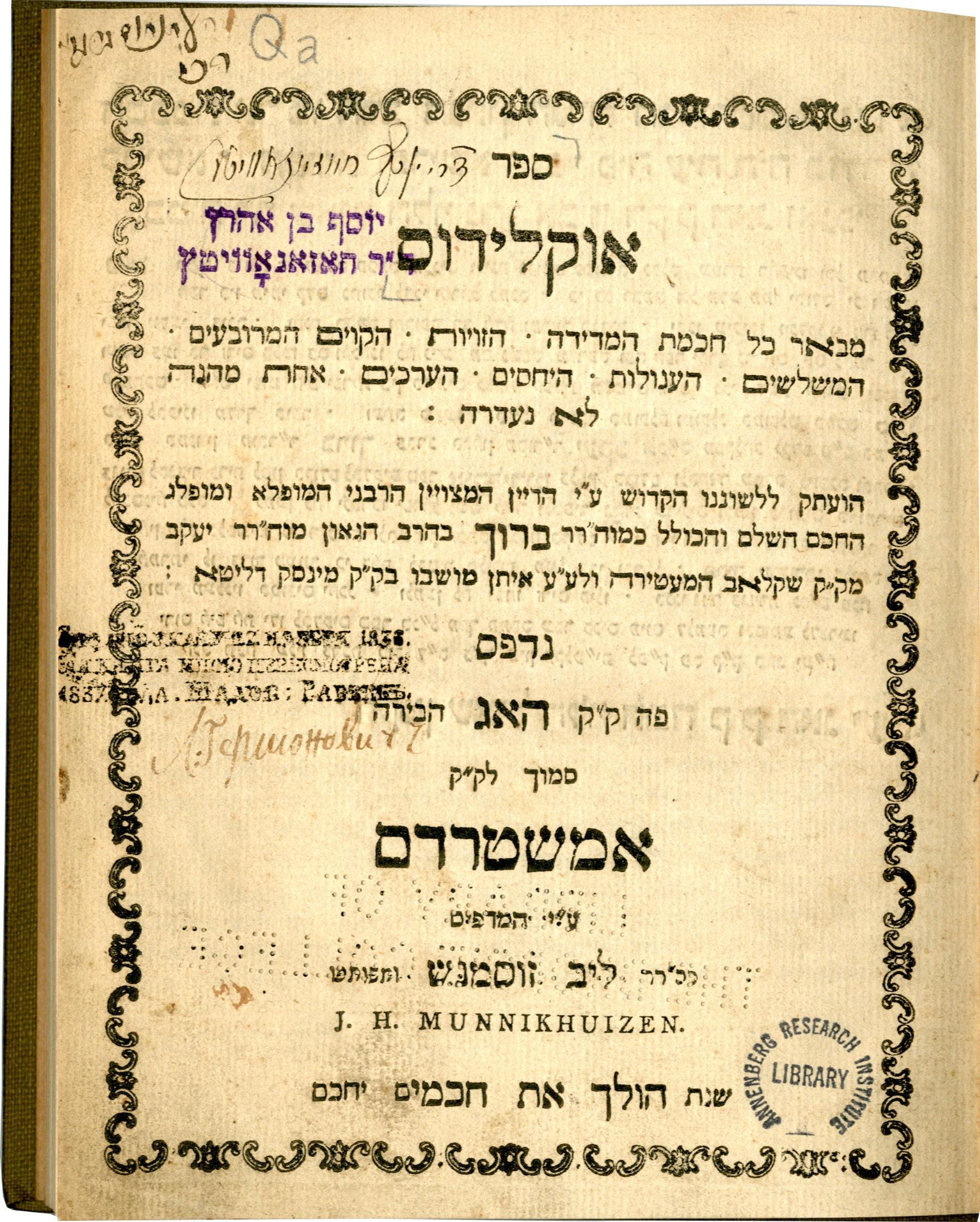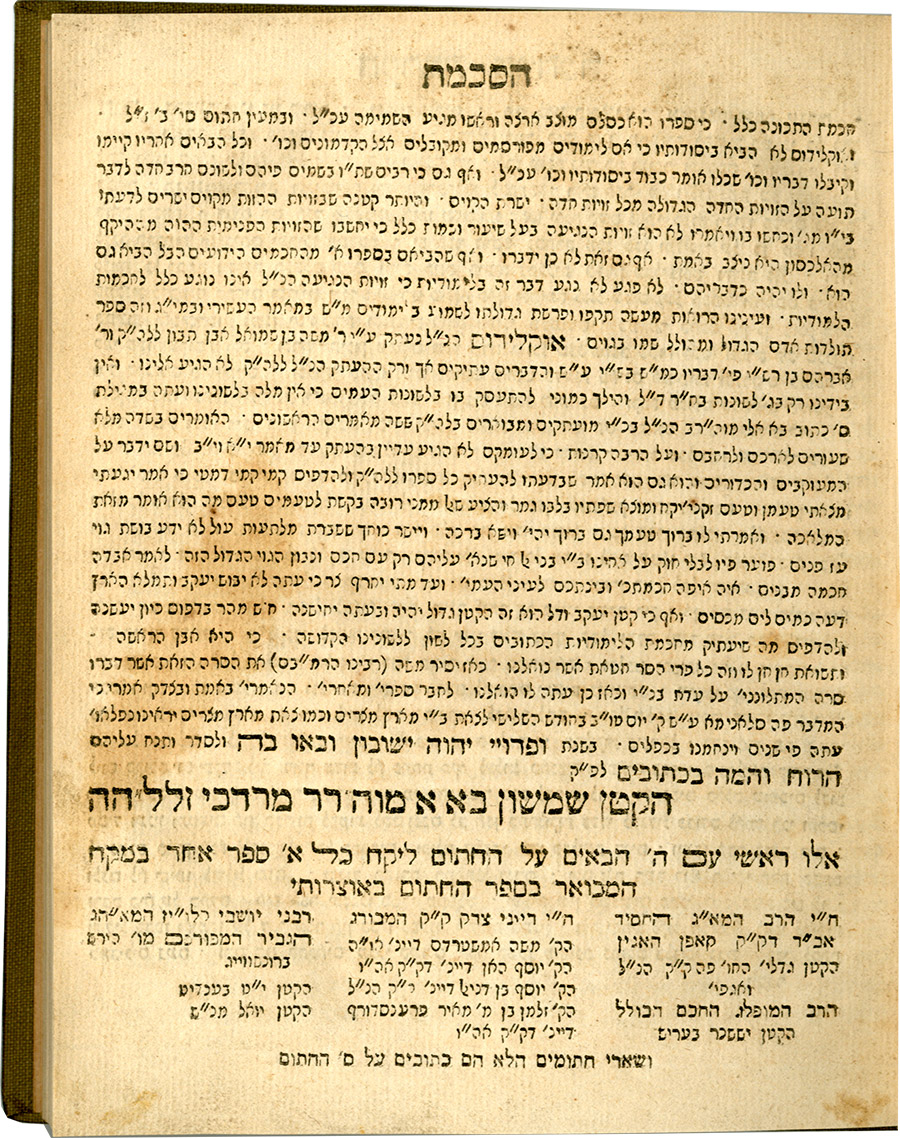On December 9 1787 the renowned English philosopher Jeremy Bentham (1748-1832) was traveling through Eastern Europe, where his brother Samuel, a prominent engineer and industrialist, was serving in the employ of Prince Potemkin and the empress Catherine the Great. Jeremy spent some time with his brother hoping to implement some of the innovative ideas that he was developing in his Panopticon. In the course of a journey through the town of Slonim (now in Belarus), Jeremy lodged the night with a Jew, a rabbi who was the proprietor of a hardware store.
Bentham was surprised to note that his host possessed two glass-enclosed bookcases that housed between 250 and 300 Hebrew volumes. The rabbi took particular pride in two scientific works in his collection: a book on astronomy to which he had added a diagram of his own, and a Hebrew edition of Euclid's Elements. It is possible to identify Bentham's unnamed hardware merchant as Rabbi Samson ben Mordecai (1734/6?- 1794) who presided over the rabbinical court of Slonim and whose name was signed to one of the letters of approbation accompanying R. Baruch of Shklov's translation of Euclid.
The volume was printed in The Hague in 1780. Rabbi Samson's words echoed the themes voiced by the translator, that Jews needed to familiarize themselves with the scientific curriculum in order to refute the accusations by hostile gentiles that they are a barbaric and ignorant people. Rabbi Elijah the Gaon of Vilna (1720-1797) was the one who commissioned Rabbi Baruch (Bendit) of Shklov to produce a Hebrew translation of Euclid's Elements: a work "which elucidates the complete science of measurement, angles, rectangles, triangles, circles, ratios and values" (as it states on the title page of the book).

